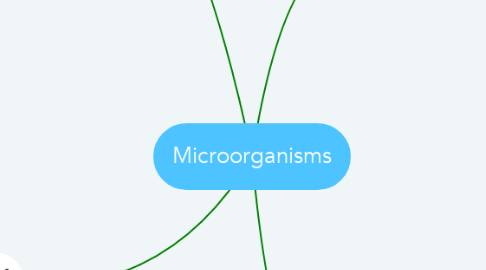
1. because all microorganisms are diferent we are going to use the example of a bacteria.
2. examples about bacteria, fungi, protists and virus
2.1. Bacteria
2.1.1. Comma-shaped bacteria – e.g. Vibrio Cholera. Spherical-shaped bacteria (Cocci) – e.g. Staphylococcus and Streptococcus. Rod-shaped bacteria (Bacilli) – e.g. E.Coli and Salmonella. Spiral-shaped bacteria (Spirilla) – e.g. Treponema and Borellia.
2.2. Fungi
2.2.1. Cryptococcosis Aspergillosis Coccidioidomycosis (Valley Fever) Histoplasmosis
2.3. Protists
2.3.1. Examples of protists include algae, amoebas, euglena, plasmodium, and slime molds.
2.4. Virus
2.4.1. smallpox. the common cold and different types of flu. measles, mumps, rubella, chicken pox, and shingles. hepatitis and of course Covid-19 (coronavirus)
3. structre, size and shapes of microorganisms
3.1. All microorganisms are diferent
3.1.1. Structure
3.1.1.1. Bacteria are single celled microbes. The cell structure is simpler than that of other organisms as there is no nucleus or membrane bound organelles. Instead their control centre containing the genetic information is contained in a single loop of DNA.
3.1.2. Size
3.1.2.1. the average size of most bacteria is between 0.2 and 2.0 micrometer (diameter). However, there are some that hold this to range between 1 and 10 micrometers.
3.1.3. Shapes
3.1.3.1. Bacteria are classified into five groups according to their basic shapes: spherical (cocci), rod (bacilli), spiral (spirilla), comma (vibrios) or corkscrew (spirochaetes). They can exist as single cells, in pairs, chains or clusters
4. The role of microorganisms
4.1. Microorganisms have several vital roles in ecosystems
4.1.1. Decomposition
4.1.1.1. Decomposers are organisms that break down dead plants or animals into the substances that plants need for growth.
4.1.2. Make Food
4.1.2.1. Nature uses microorganisms to carry out fermentation processes, and for thousands of years mankind has used yeasts, moulds and bacteria to make food products such as bread, beer, wine, vinegar, yoghurt and cheese, as well as fermented fish, meat and vegetables.
4.1.3. Cause Diseases
4.1.3.1. The microbes cause infectious diseases like the flu and measles. There is also solid evidence that they generate antibodies to combat other more serious ones such as some forms of cancer and coronary heart disease.
5. Types of respiration
5.1. Anaerobic Respiration
5.1.1. Anaerobic respiration transfers energy from glucose to cells. It occurs when oxygen is not present. It transfers large amounts of energy quickly.
5.2. fermentation
5.2.1. Fermentation, chemical process by which molecules such as glucose are broken down anaerobically.
5.3. Aerobic Respiration
5.3.1. Living things need energy to perform different tasks in order to survive. Aerobic respiration is a chemical reaction that transfers energy to cells. The waste products of aerobic respiration are carbon dioxide and water.
